When I was 15, my father bought me a Geeta press book titled “Dasa Mahavidya” to ensure I stay religiously bound. This book was a picture-based, mythological representation of the 10 cosmic personalities of Devi, the feminine energy. Thought I was not sure if I turned religious due to it but the imagery was something which attached me. The front page of the book had a picture of goddess Kali as a nude women body standing on a man. The revelation of feminine representation created a huge impact of toggling the feminist in me as I developed my art of drag.
The Dasa Mahavidya photo series brings the images of 10 different feminine forms of Shakti, each representing a certain element of womanhood. I see these images as 10 stigmas which the society associate with women for centuries to ensure the patriarchy is sustained.
Inspired by this, the Dasa Mahavidya photo series brings the images of 10 different feminine forms, each representing a certain element of womanhood. I see these images as 10 stigmas which the society associate with women for centuries to ensure the patriarchy is sustained. The 10 images of Shakti represented here are usually only used in the tantric tradition. But for me as a millennia gender-fluid artist, these images created a way to bring both the idea of femininity and masculinity into one’s body. I wanted to use my drag as a medium to create these imageries of inclusion.
Also read: Photo Essay: #WomenHaveLegs – And The Last We Checked, They Are Hairy Too
The Dasa Mahavidya are not so aesthetically pleasing as compared to goddesses like Laxmi, Saraswati and Durga. That is why I wanted to see if I can bring in a deep interpretation with using my gender-fluid body and drag myself to represent these imageries.
The Dasa Mahavidya are not so aesthetically pleasing as compared to goddesses like Laxmi, Saraswati and Durga. These imageries are far beyond the idea of sensuality, sexuality, colour, stigmatic as well as an erotic display of the feminine forms. That is why I wanted to see if I can bring in a deep interpretation with using my gender-fluid body and drag myself to represent these imageries. I, with the help of two of my friends, created this photo performance with each Mahavidya associating with a certain stigma.
Also read: In Conversation With Durga Gawde: An Artist, Activist And Drag King
Kali for the Complexation
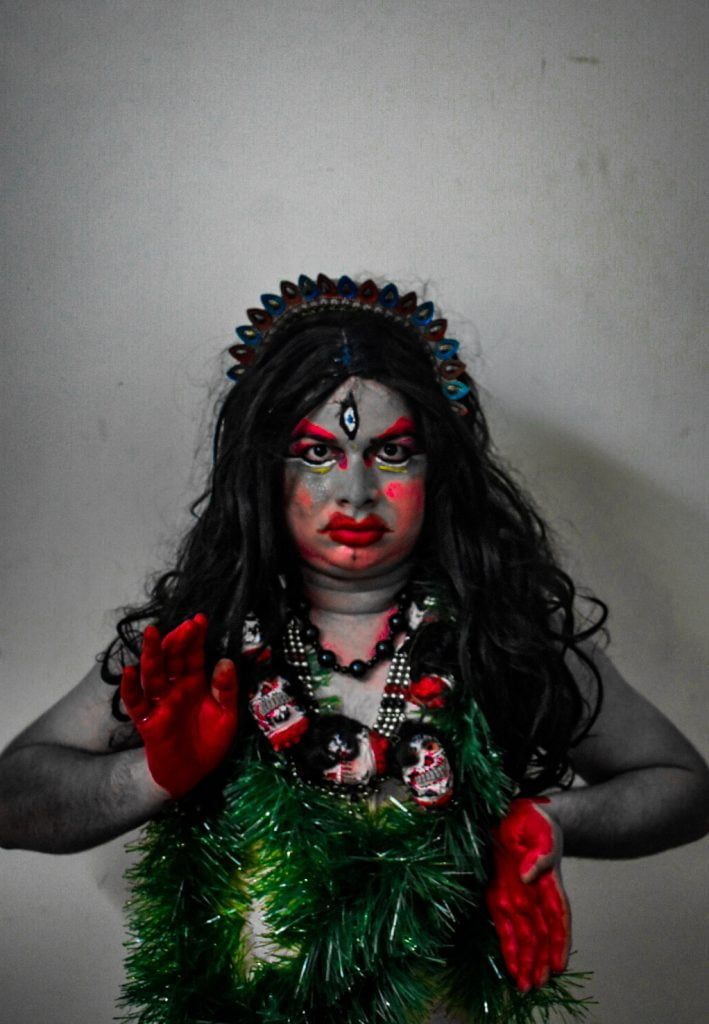
Kali, as the name indicates, is someone with a darker complexion. In India, women have been judged, shunned and bullied for their complexion. Only fair skin continues to be something which is considered elegant and ever since the girl child is born, the parents ensure her to tone her colour down. And so, the cosmetic industry runs a huge turnover to upscale the fairness of the skin colour and hardly embrace brown skin. For this reason, Kali of the Dasa Mahavidya becomes one of the perfect feminine imagery which celebrates the idea of a darker skin complexion.
Tara for the Mentality

Tara is a goddess of wisdom, while it is a misinterpreted idea in India that a man is wiser than women. When at workplaces a man is given a deliberate position over women, one of the reasons cited is that women are not mentally strong, which is wrong. Tara of the Dasa Mahavidya here brings the imagery of women who can balance the quotient of mental awareness and emotions and presents a strong viewpoint that women are mentally strong.
Bhuvaneshwari for Visibility

I used the imagery of Bhuvaneshwari of the Dasa Mahavidya to talk about the stigma of women using social media. While women are still underrepresented in media generally, social media encourages a more level playing field, allowing for the voices of women from a wider array of backgrounds and countries, with or without traditional power, to be heard. Indeed, social media has opened a new frontier for women’s rights mobilisation. For one, it encourages solidarity and emphasises shared experiences. Relooking at how the #MeToo movement revealed a rift in modern-day feminism between an ethos of individualism and self-sufficiency—or “pulling yourself up by your bootstraps”—and the collective liberation approach represented by the #MeToo movement. This imagery was to celebrate that feminine energy which is open, visible and out.
Tripura sundari for Beauty
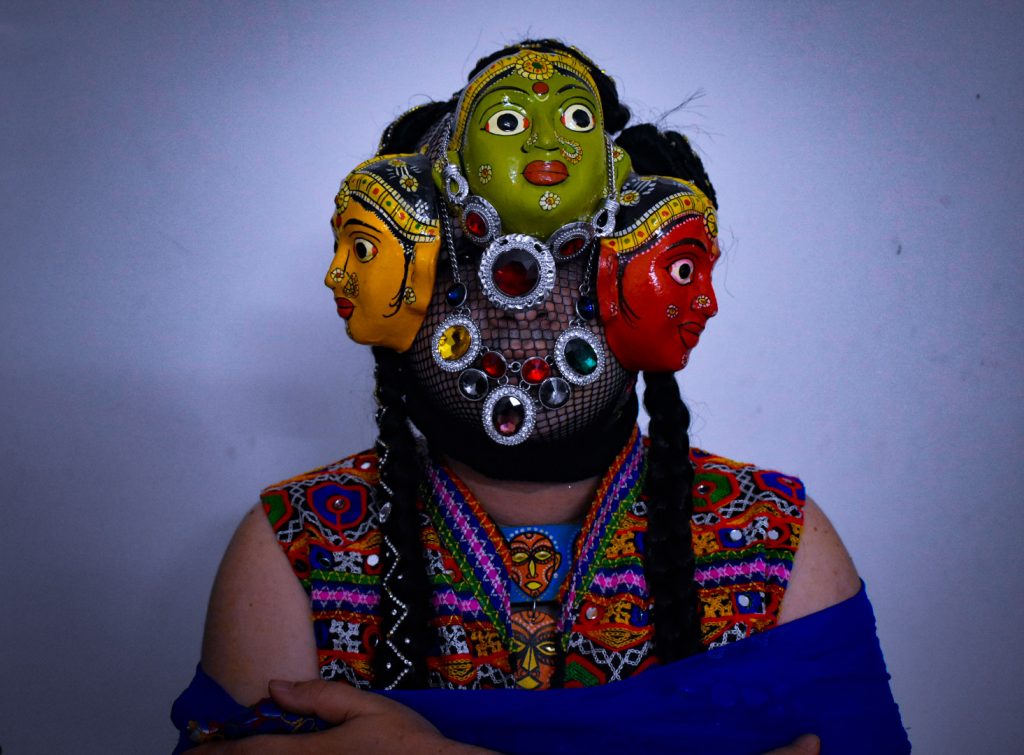
Tripura Sundari of the Dasa Mahavidya is the one who is beautiful across all the world. Though with the time women were subjected to multiple beauty standards applied by the society such as long hair, long nails and round face, Tripura Sundari for me became a perfect image to bring in the aspect of Anti-Beauty, a deformed image of beauty which questions the initial idea of what exactly beauty is.
Bhairavi for Body Positivity
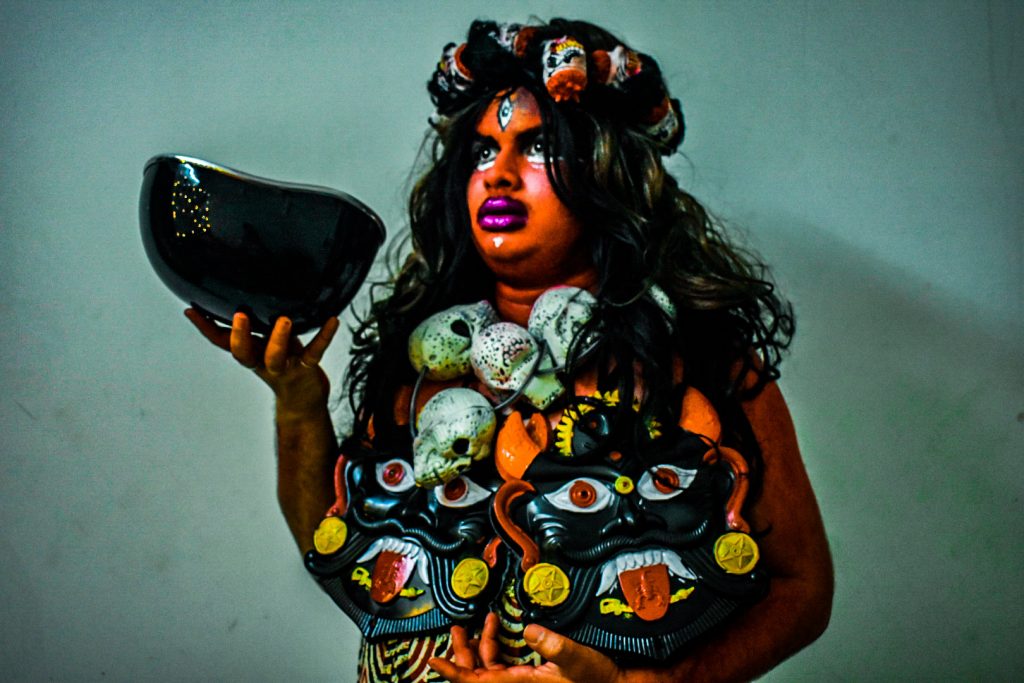
FAT: It is that one-word women are indoctrinated to detest. Just a mention of it has them freaked out and there is no bigger insult than being called that. The three-letter word has forced women of all ages to go to war with their bodies. The fear of ever being labelled that has been the root cause of body dysmorphia and eating disorders. In a thin-obsessed society, being a fat woman is to fail on every single level; it is not just a physical flaw but a moral one as well. I use Bhairavi of the Dasa Mahavidya as the imagery of the fat acceptance movement and fat activism so that the word ‘fat’ loses its negative status. This imagery has a gigantic body with Face fat which make its an inclusive imagery for this generation.
Chinnamasta for sexual freedom
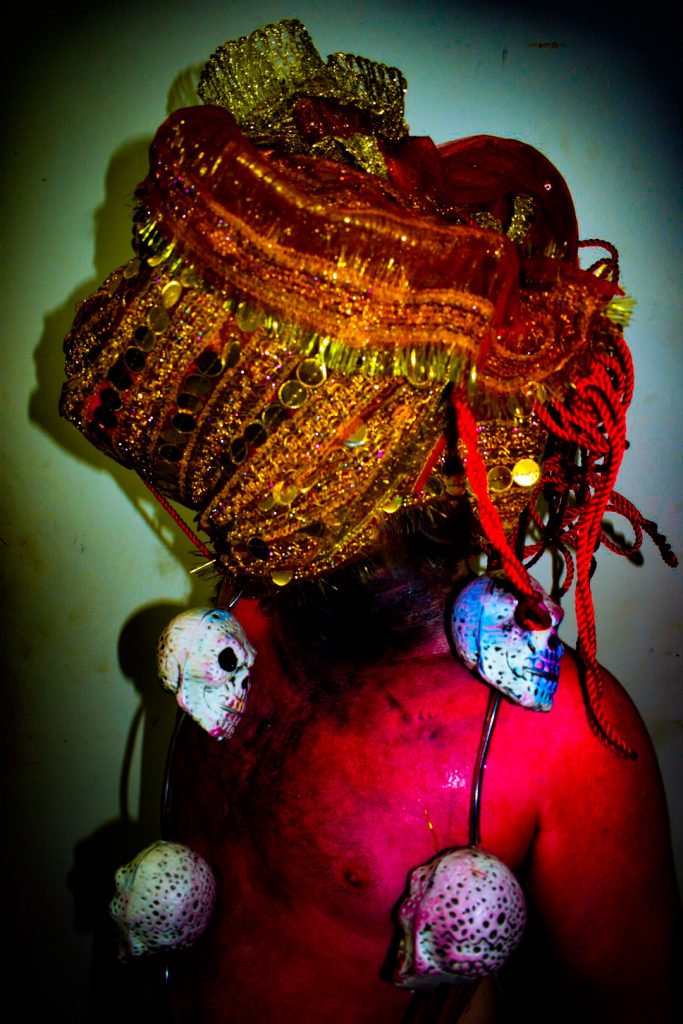
Sexual freedom is a taboo in the country we live in and women have always been denied their sexual freedom. Chinnamasta, the image of a woman drinking blood from the cut body showcases her freedom to choose on how to harness her sexual energies. That is why Chinnamasta of the Dasa Mahavidya is an image which needed to be represented as a feminine figure who represents sexual freedom.
Dhumavati for Widowing
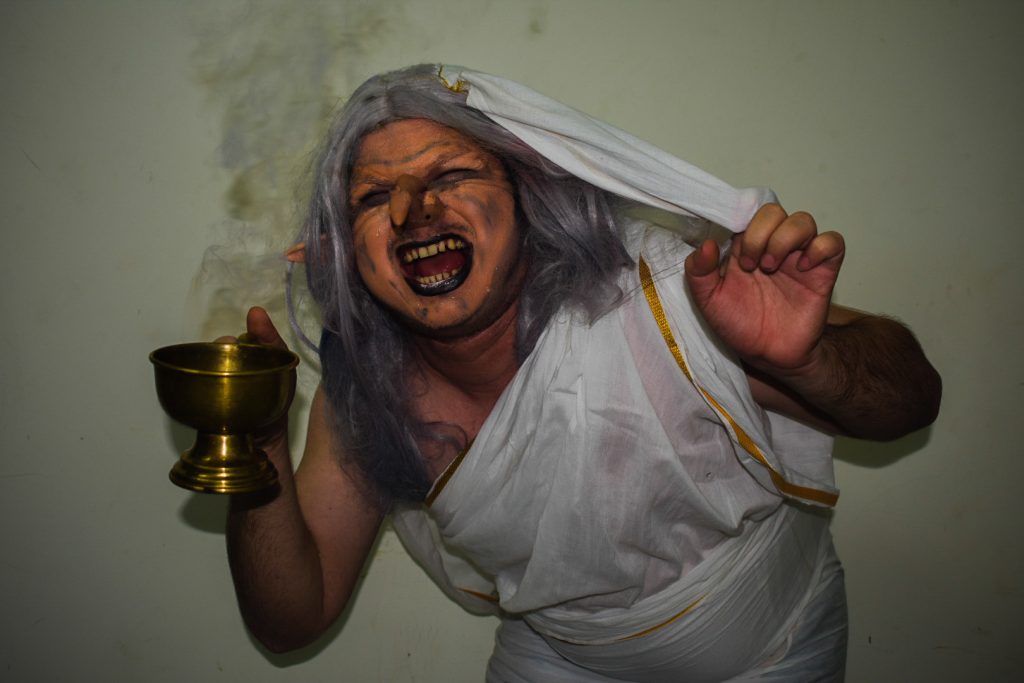
Women in Indian society who are either divorced or lost husbands are considered inauspicious. Majority of the time women are subjected to discrimination because of being a widow, a practice happening for ages now but still being there regularly. Dhumavati of the Dasa Mahavidya celebrated the idea of being a widow: the only goddess you could see in entire Hinduism who is a widow brings prayed. This imagery represents the idea of inclusivity of single mothers and women.
Vagalamukhi for Voices
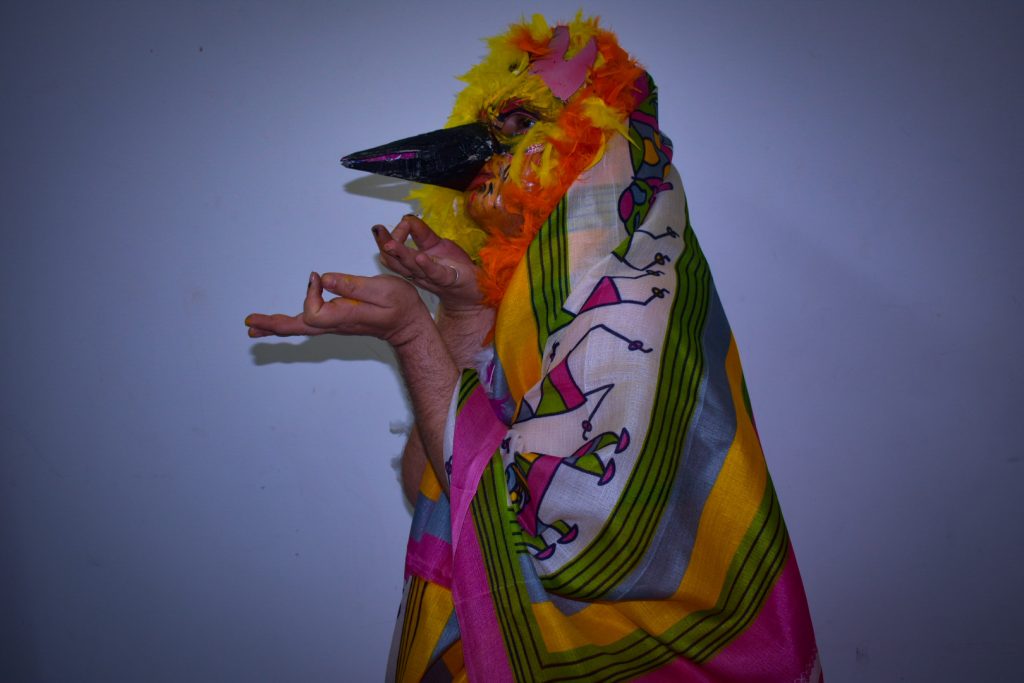
In our society, voices of women are always been suppressed by the patriarchy, Valagamukhi of the Dasa Mahavidya celebrated the idea of those women who raise their voices so strong and targets it towards the change-makers as a crane catching its prey. Vagalamukhi celebrates the idea of freedom of expressing views of a woman strong and sharp to society.
Matangi for education
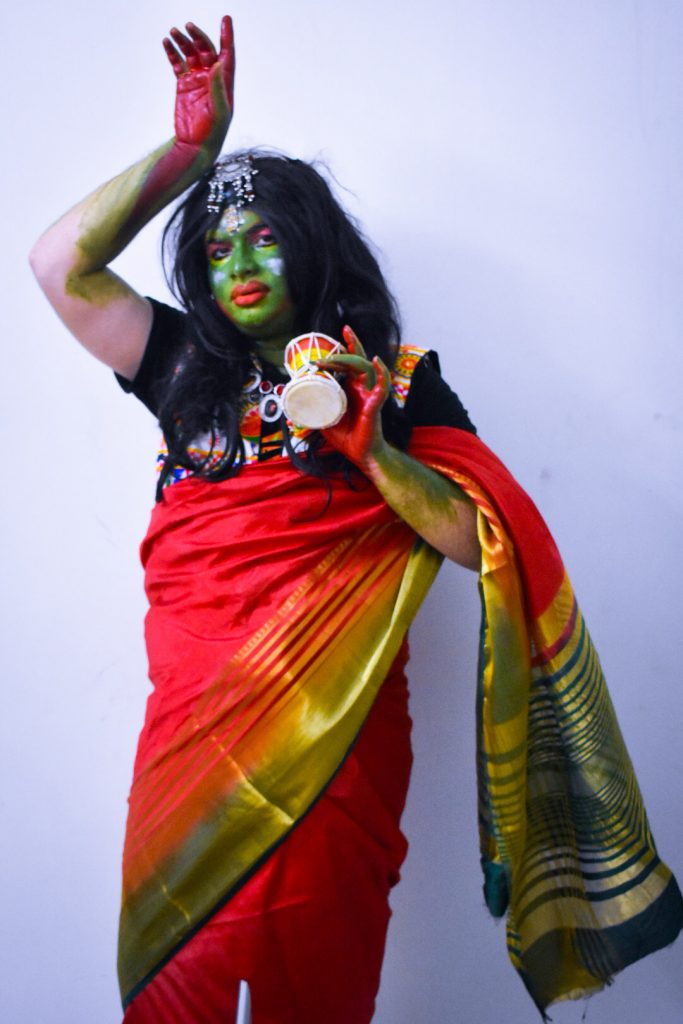
While women around the world still fighting the right of education for the girl child, the imagery of Matangi shows the idea of balancing the thought of being educated and skilled as equally as men. Matangi of the Dasa Mahavidya questions the idea of the status quo of women in education by stealing the dahamarukam from Shiva and playing it herself.
Kamala for Style
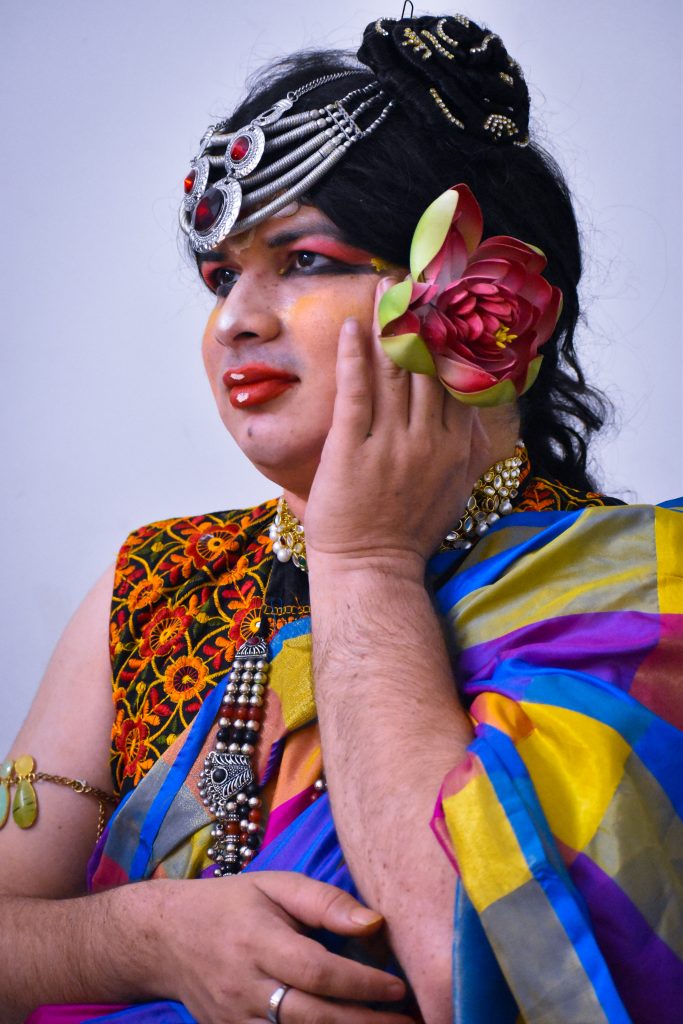
Moral policing is still seen as prevalent against women despite women being idealised as the Lakshmi of the house. The choices of what they can wear are decided by the patriarchs, Kamala, the tantric Lakshmi, celebrates her freedom to choose what see where irrespective of the social context. This Kamala questions the idea of what is sacred and what is not and demystifies the stigma associated with the size of clothes women is asked to wear in society.
Patruni Chidananda Sastry is a Classical Dancer, Artpreneur and Tranimal Drag artists from Hyderabad. Patruni started dancing from the age of 7. Patruni Sastry unique style called “Expressionism” is a new way to tell stories of awareness to society. Patruni is also the founder of Dragvanti, One of India’s drag specific blog and contributes to it via presenting topics of Indian drag history and culture. Patruni can be found on Instagram, Facebook and Twitter
Credit for images: Photographs by Rakesh Asileti and Ragavendra Chivukulla, as shared by Patruni Chidananda Sastry with Feminism In India
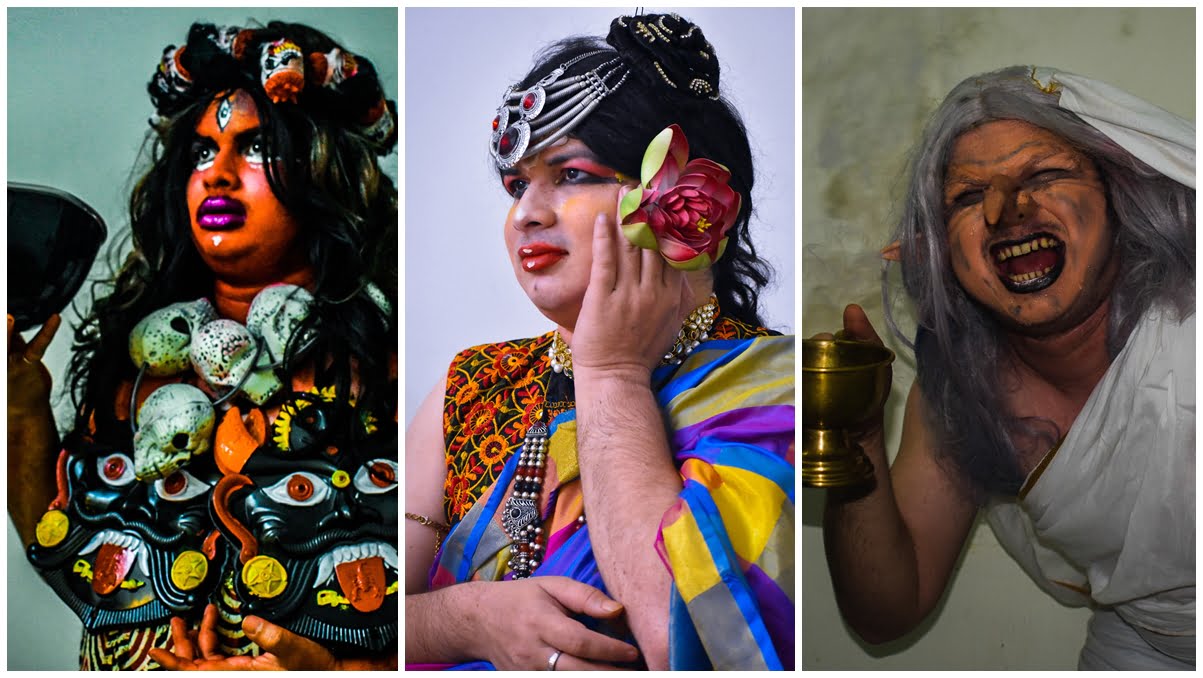

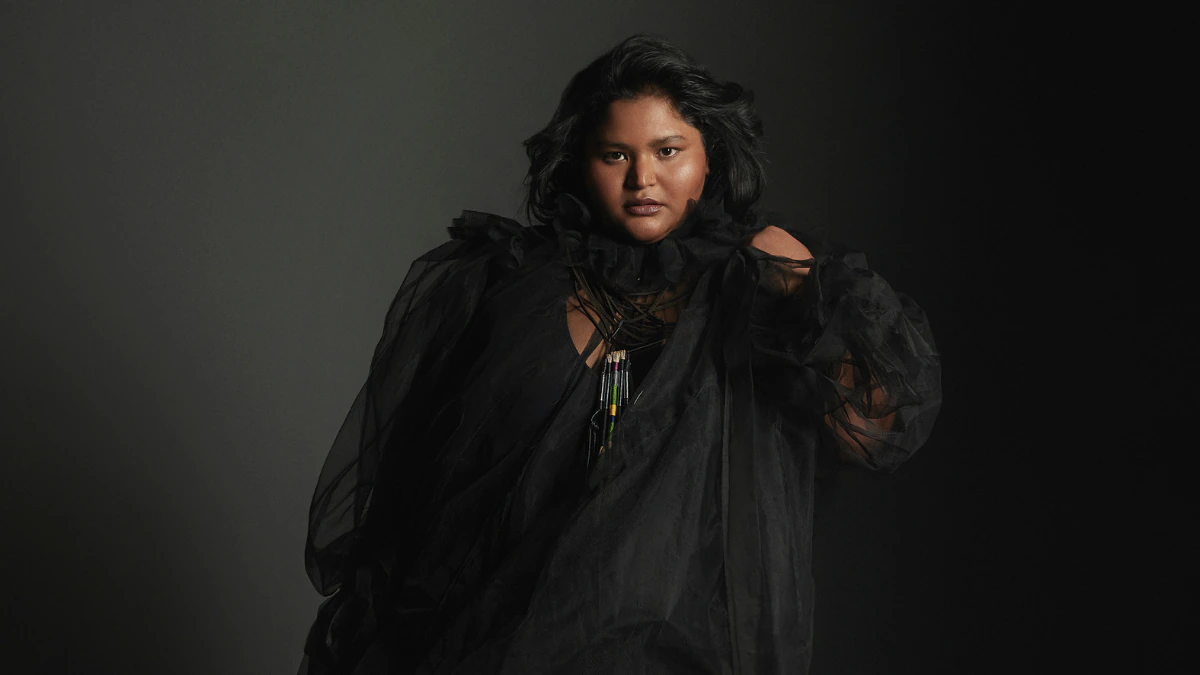


Very interesting insights and comparison. Absolutely involving art work for a reader
Those are some intense pictures, the article writing is pretty good though, thanks